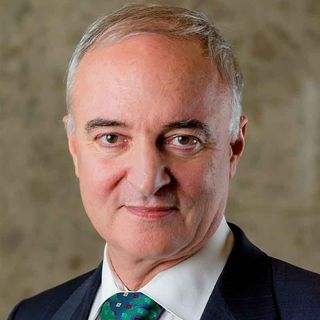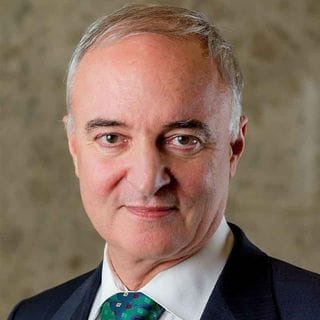One of the most popular questions when choosing a tummy tuck is what the belly button will look like after the procedure. Will it be relocated, removed, or look unnatural? Most people are concerned about this, mainly because of poorly performed surgeries, which can result in prominent scars or oddly placed navels.
This is a valid concern, since the belly button is usually involved in a tummy tuck. During abdominoplasty, tightening the muscles of the abdomen and removing excess skin changes the position of the tissue above. Although the belly button itself is not excised, the skin around it is shifted, and a new opening is created to bring the original navel through. An experienced surgeon gently remodels and relocates it to preserve a natural, attractive look.
What Is a Tummy Tuck (Abdominoplasty)?
A tummy tuck involves eliminating excess skin, tightening the distended abdominal muscles (diastasis), and reshaping the remaining tissue to achieve a smoother, flatter shape. It is often selected after pregnancy or significant weight loss. During the surgery, the skin is pulled downward, which can naturally impact the belly button’s location but doesn’t involve its removal.
Why Is the Belly Button Involved in a Tummy Tuck?
The belly button is involved in a tummy tuck surgery because of its position and attachment to the wall of the abdomen. Unlike other skin characteristics, the belly button is attached to the wall of the abdomen via a stalk of tissue.
When the skin over the abdomen is lifted by surgeons in a full tummy tuck, there is work that needs to be done around the navel’s point of attachment. As the skin that is below the navel is removed, the navel’s original position would become too low on the belly if not adjusted.
The belly button is a central landmark for abdominal aesthetics, so maintaining its proper position and natural appearance is important to achieve optimal results.
How Does a Full Tummy Tuck Affect the Belly Button?
In a full tummy tuck, the navel undergoes umbilical transposition:
- The surgeon frees the belly button from the surrounding skin while leaving it attached to its stalk and blood supply.
- Excess skin is removed, and the remaining skin is drawn downward.
- A new opening is created at the ideal spot, usually near the natural waistline.
- The navel is gently brought through the new opening and secured, preserving its natural depth and attachment while aligning it with the newly contoured abdomen.
Will My Belly Button Change After a Tummy Tuck?
Yes, your belly button will probably undergo some alteration after a tummy tuck; however, the degree depends on your anatomy and the technique used. The belly button can feel slightly different from what it used to be in terms of size or how it turns inward. Some patients find the new belly button to be more youthful or beautiful, while others comment that it’s a bit higher or lower than expected.
What Happens to the Belly Button in a Mini Tummy Tuck?
In a mini tummy tuck, the belly button usually doesn’t change position and is not significantly impacted by the surgery. This is because mini tummy tucks do not touch the area above the belly button, but instead manipulate excess skin.
The cut for a mini tummy tuck is smaller and lower on the abdomen, typically just above the pubic region. However, the belly button may appear to sit slightly higher relative to your overall abdominal profile.
How Do Surgeons Reshape the Belly Button?
Plastic surgeons employ different methods to reshape and reposition the belly button in a tummy tuck, depending on the patient’s anatomy and the desired result. Some of the methods used are discussed below:
- Standard opening: The most popular method is to create a new opening within the repositioned abdominal skin with an oval or round incision. The shape and size of this opening are planned carefully to provide a natural result.
- Purse-string sutures: Another method includes employing a purse-string suturing method, where the navel is drawn through the new hole and held by sutures that form a natural concave curve.
- Flap or flopping method: The navel is placed to produce a more oval or vertically shaped look.
How Long Does It Take for My Belly Button to Heal?
Healing occurs in stages:
- Weeks 0-2: Dressings cover the navel. Swelling and bruising are normal; keep the area clean and dry.
- Weeks 2-6: External stitches (if any) are removed. Swelling decreases, and the belly button begins to take a more natural shape.
- Weeks 6-8: Most swelling resolves; the navel settles into its final position.
- Months 3-6: Final contour and scar maturation occur.
What Are Red-Flag Signs Around My Belly Button Post-Op?
Some red-flag signs around your belly button post-op need to be addressed by a doctor immediately. Here are some of the issues that require immediate attention:
- Infection signs (spreading redness, warmth, thick or foul discharge, bad odor)
- Fever
- Shift in the color of the belly button
- Excessive bleeding
- Unusual swelling
- Any changes in belly button position or appearance that happen suddenly
Can I Choose a Different Belly Button Style?
Your final belly‑button options are limited by your anatomy and the required surgical approach. However, most surgeons can work with some reasonable aesthetic desires.
The most typical belly button types are the “innie” (inward-curving), “outie” (bulging), oval, round, and vertically oriented shapes. The majority of patients choose an inward-curving belly button that looks natural and is proportionate to their body.
You can discuss the styles with your surgeon to know which styles are achievable based on your existing anatomy, skin thickness, and the extent of your tummy tuck procedure. Factors such as natural belly button depth, the amount of skin being removed, and your healing characteristics all influence the outcomes. Keep expectations realistic and don’t choose to go for extreme alterations, as it can make the belly button look undesirable.
What Is Umbilicoplasty & When Is It Needed?
Umbilicoplasty is a dedicated procedure to reshape or reconstruct the navel, performed alone or with a tummy tuck. It is appropriate for:
- Large or asymmetrical navels
- Congenital belly‑button anomalies
- Complications or scarring from previous surgery
- Herniated or protruding belly buttons
The surgeon removes excess skin, recontours the opening, and adjusts depth to create a more attractive, proportionate navel.
Why Select Dr. Tarak H. Patel?
If you are thinking about reshaping your belly button or a tummy tuck with belly button revision, Northwest Face & Body’s Dr. Tarak H. Patel is a top choice for tummy tuck surgery in Kirkland and Bellevue region. And here’s what makes him the best:
- Board-certified: Dr. Patel is board-certified, so you can be sure you’re consulting a well-trained and highly skilled surgeon.
- Specialization in Mini and Full Tummy Tucks: These procedures often involve reshaping or repositioning the belly button, an area where Dr. Patel excels.
- Comprehensive Consultations: He explains incision placement, scar expectations, healing timelines, and customizes the surgical plan based on your goals.
Read more: Does A Tummy Tuck Fix The Belly Button?
What To Do If Your Tummy Tuck Belly Button Looks Weird





